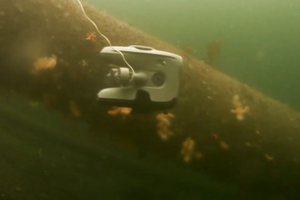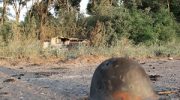Analysts came to this conclusion by analyzing images from several satellites.

Satellite monitoring revealed two ships with disabled trackers < strong>in the area of ”Nord Streams” a few days before the explosions on the gas pipelines. This is reported by Wired, referring to the analysis received by SpaceKnow.
The first gas leaks on the Nord Stream 2 pipeline in the Baltic Sea were detected on September 26. Officials immediately suspected sabotage.
According to an analysis by satellite data monitoring company SpaceKnow, two ships, each between 95 and 130 meters long, passed within a few miles of the Nord Stream 2 leak sites. .
“We discovered several “dark ships”, that is, ships of considerable size, which passed through the area. They had their sensors turned off, meaning there was no information about their movement, and they tried to hide information about their location and general information,” said CEO and co-founder of SpaceKnow Jerry Jawornicki.
This conclusion was made by analysts by analyzing images. from several satellites. This is likely to further fuel the debate about the causes of the explosions.
Many countries investigating the incident believe that the Nord Stream 1 and Nord Stream 2 pipelines were affected by a series of explosions, and much suspicion is directed at Russia amid its war against Ukraine. Russia denies involvement.
After SpaceKnow identified the ships, it reported its findings to NATO officials investigating the Nord Stream explosions. According to Javornicki, NATO representatives asked the company to provide more information.
NATO spokeswoman Oana Lungescu said she would not comment on the details, but confirmed that the alliance considers the incident a “deliberate and irresponsible act of sabotage,” which is why it has increased its presence in the Baltic and North Seas. However, a NATO official, who was not authorized to speak publicly, confirmed to WIRED that the alliance had received the SpaceKnow data and said the satellite images could be useful in the investigation.
To identify the ships, the company looked at 90 days of archival satellite images of this area. The company analyzes images from several satellite systems.
“We have 38 special algorithms that can detect military equipment,” Jawornicki said.
In the weeks before the explosions, SpaceKnow detected 25 ships passing through the region, ranging from cargo ships to large multi-purpose ships. In total, 23 of these ships had Automatic Identification System (AIS) transponders on. Two ships did not have AIS data enabled.
According to international law, large ships are required to install and use AIS. This tracking system was designed to help ships navigate and avoid potential collisions with other vessels. Once turned on, AIS transmits the ship's name, position, direction, speed, and other information.
It is relatively rare for ships to turn off their AIS transponders. Ships that do this are often suspected of being involved in illegal fishing or modern slavery.
Read also: Russia was still allowed to inspect the damage on the “Nordic Streams”
Related video
Held < span>the biggest sabotage in the history of gas transportation systems of the world. In the Baltic Sea, three of the four strands of both “northern currents” snapped at short intervals. Seismographs in Denmark and Sweden detected explosions near Bornholm Island. First, the pipe of the never-launched Nord Stream-2 was broken, then the pipes of Nord Stream-1, which has been idle since the end of August, were blown apart. “Who blew up the “Nord Stream” and why?”,explains Ihor Maskalevich. >




